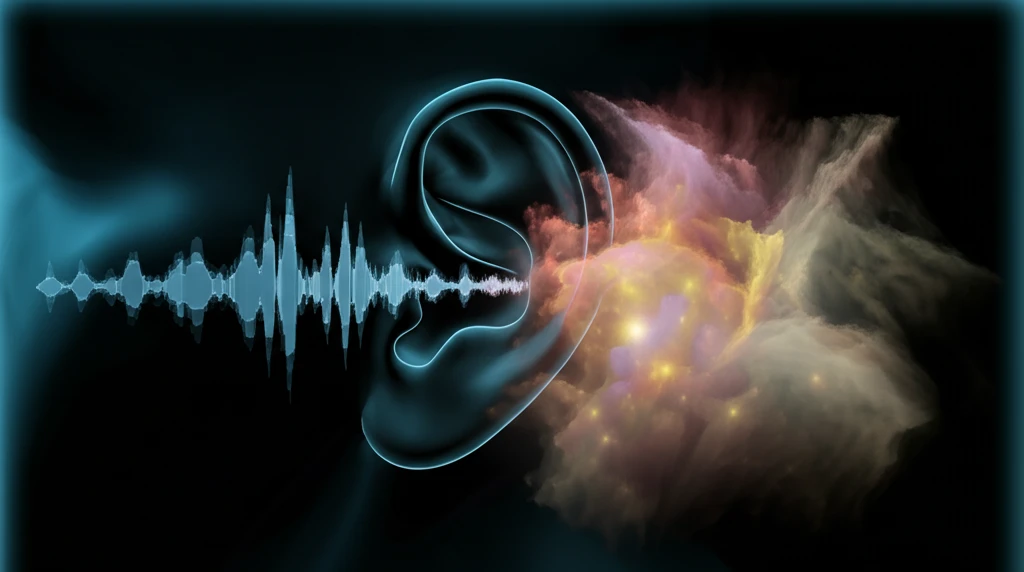
Unlocking Your Ear's Secrets: How Understanding Otoacoustic Emissions Can Protect Your Hearing
"Dive into the fascinating world of otoacoustic emissions (OAEs) and discover how these tiny sounds can help us understand and safeguard our hearing health."
Have you ever wondered how your ears manage to pick up the subtlest of sounds? The process is far more intricate than you might imagine, involving tiny structures within your inner ear that not only receive sound but also produce their own faint sounds in return. These sounds are called otoacoustic emissions (OAEs), and they're revolutionizing how we understand and protect hearing health.
Otoacoustic emissions (OAEs) are low-intensity sound waves produced by the inner ear, specifically by the outer hair cells in the cochlea. These hair cells, essential for converting sound vibrations into electrical signals that the brain can interpret, also vibrate in response, generating these emissions. Think of it as your ears talking back!
These emissions aren't just random noise; they're a sign of a healthy, functioning inner ear. Scientists and audiologists use OAEs to assess the condition of the cochlea and detect hearing problems, especially in infants and young children who can't verbally communicate their hearing experiences.
The Science Behind the Sounds

The discovery of otoacoustic emissions in the late 1970s by British physicist David Kemp was a game-changer in audiology. Before this, our understanding of the inner ear was largely based on post-mortem studies and indirect measurements. Kemp's findings opened a new window into the living, working cochlea, allowing us to observe its mechanics in real-time.
- Early Detection of Hearing Loss: OAE testing is particularly useful for identifying hearing loss in newborns and infants.
- Monitoring Cochlear Health: OAEs can be used to monitor the effects of noise exposure or ototoxic medications on the inner ear.
- Differentiating Types of Hearing Loss: OAE testing can help distinguish between sensory and neural hearing loss.
- Research and Development: OAEs are used in research to better understand the mechanics of the inner ear.
Empowering Your Hearing Health
Otoacoustic emissions are more than just a scientific curiosity; they're a powerful tool for understanding and protecting your hearing health. By staying informed about OAEs and advocating for regular hearing screenings, you can take proactive steps to safeguard your ability to hear the world around you. Whether you're a parent concerned about your child's hearing or an adult looking to maintain your auditory well-being, understanding OAEs is key to unlocking your ear's secrets and ensuring a lifetime of healthy hearing.
